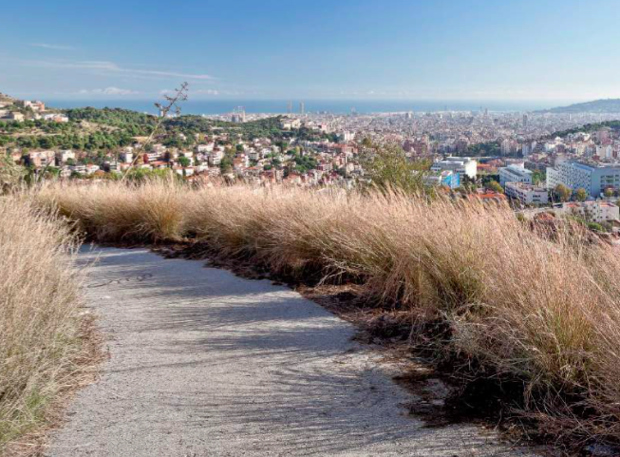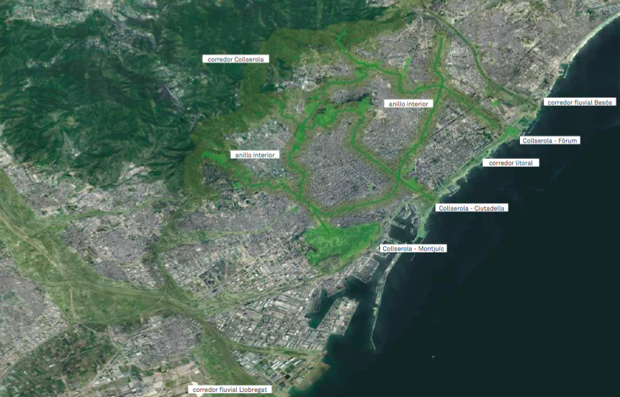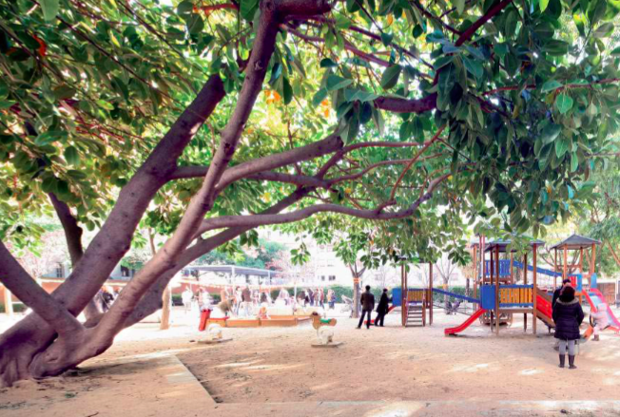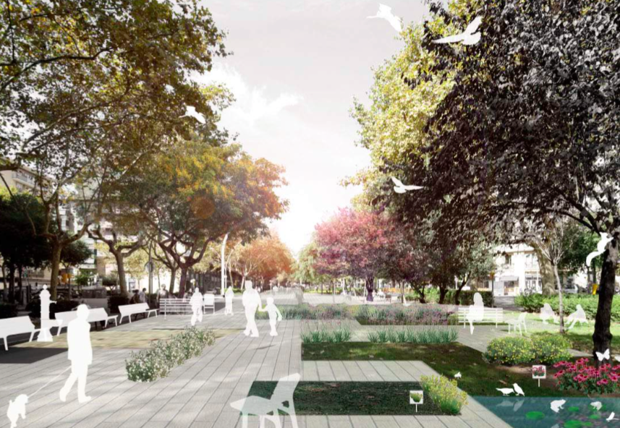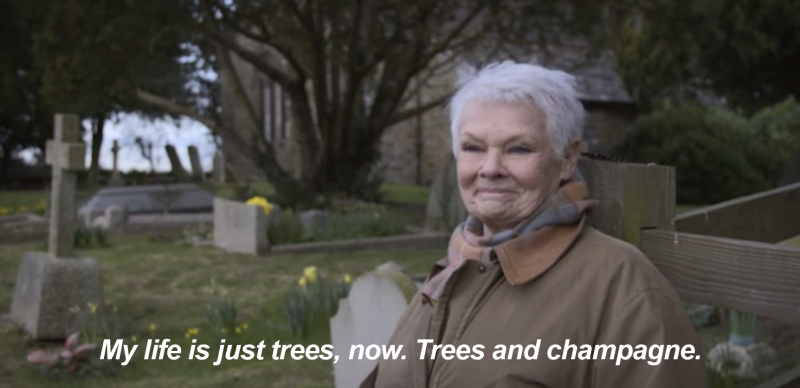


Dr. Stephen Ilardi
Oct. 26, 2017 9:58 a.m. ET
We live in an era of previously unimaginable luxury. Without leaving our sofas, we can conjure almost any book or film on our phone and enjoy it with exotic cuisine delivered right to our doorstep via an app. But there is a cost to this convenience that doesn’t appear on your credit-card statement. Our indoor, sedentary and socially isolated lives leave us vulnerable to depression. The U.S., the most technologically advanced nation on the planet, is also the most depressed: Three in 10 Americans will battle depressive illness at some point in their lives, an estimated tenfold increase since World War II.
Although antidepressant use in the U.S. has risen 400% since 1990, so has the rate of depression—and not just in America. The World Health Organization says depression is the leading cause of disability around the world.
Labor-saving inventions, from the Roomba to Netflix, spare us the arduous tasks of our grandparents’ generation. But small actions like vacuuming and returning videotapes can have a positive impact on our well-being. Even modest physical activity can mitigate stress and stimulate the brain’s release of dopamine and serotonin—powerful neurotransmitters that help spark motivation and regulate emotions. Remove physical exertion, and our brain’s pleasure centers can go dormant. As AI renders the need for human activity increasingly superfluous, rates of depressive illness will likely get worse.
In theory, labor-saving apps and automation create free time that we could use to hit the beach or join a kickball league. But that isn’t what tends to happen. We’re wired, like our ancestors to conserve energy whenever possible—to be lazy when no exertion is required—an evolutionary explanation for your tendency to sit around after work. Excessive screen time lulls us ever deeper into habitual inactivity, overstimulates the nervous system and increases production of the stress hormone cortisol. In the short term, cortisol helps us react to high-pressure situations, but when chronically activated, it triggers the brain’s toxic runaway stress response, which researchers have identified as an ultimate driver of depressive illness.
At first blush, it seems as if our smartphones should keep us better connected than ever through an endless stream of texts, instant messages, voice calls and social-media interactions. But as smartphones have become ubiquitous over the past decade, the proportion of Americans who report feelings of chronic loneliness has surged to 40%, from 15% 30 years ago. The psychological burden is particularly pronounced for those who don’t balance screen time with in-person interactions. Face-to-face conversations immerse us in a continuous multichannel sensory experience—only a fraction of which can be transferred via text or video message. Communicating solely through technology robs us of the richer neurological effects of in-person interactions and their potential to alleviate feelings of loneliness and depression.
A few generations ago, people spent most of their waking hours outdoors. Direct sunlight boosts the brain’s serotonin circuitry, protects against seasonal affective disorder and triggers the eyes’ light receptors, which regulate the body’s internal clock and sleep patterns—yet we spend 93% of our time inside. Our mood suffers, and our body loses the ability to find restorative sleep. And bathing our eyes in artificial lighting—especially the blueshifted hues of flat screens—stalls the body’s nightly release of melatonin, the drowsiness-inducing hormone, until 45 minutes after we power down. The resulting sleep deprivation can both trigger and compound depression.
But perhaps the most telling evidence of technology’s effect on our well-being comes from the so-called unplugged study from 2010, in which about 1,000 students at 19 universities around the world pledged to give up all screens for 24 hours. Most students dropped out of the study in a matter of hours, and many reported symptoms of withdrawal associated with substance addiction. But those who pushed through the initial discomfort and completed the experiment discovered a surprising array of benefits: greater calm, less fragmented attention, more meaningful conversations, deeper connections with friends and a greater sense of mindfulness.
This isn’t a Luddite manifesto. Personal tech is here to stay, and a mass unplugging is about as likely as the discovery of Atlantis. Luckily for us, the same technology that’s wrecking our emotional well-being can, when smartly employed, reduce and even reverse the symptoms of depressive illness. Sometimes the problem contains the solution.
At the University of Kansas, my clinical research team has developed the Therapeutic Lifestyle Change (TLC), a six-step program that treats depression without pharmaceuticals. The three steps listed here get a boost from technology.
Artificial light boxes—which simulate the sun’s intensity (10,000 lux) and broad-spectrum light exposure—can be especially effective during winter, but many patients end up using them all year. Try sitting in front of one for 30 minutes at the same time every day.
If exercise were a pill, all doctors would prescribe it to avert depression. Small amounts—brisk walking for 30 minutes three times a week—can combat depression as well as antidepressants, without side effects. Apps like Fitocracy turn your phone into a personal trainer.
An hour before bedtime, turn the thermostat down five degrees, use a rheostat switch to dim indoor lighting, and make sure all screens employ an app (such as Night Shift or f.lux) that shifts light toward the yellow-orange end of the spectrum.
Listen to the Future of Everything, a podcast series that explores the science and technology shaping our lives. Subscribe through Apple Podcasts, iHeartRadio, Stitcher, Spotify, Google Play Music or your preferred podcasting platform.
https://www.wsj.com/article_email/why-personal-tech-is-depressing-1509026300-lMyQjAxMTI3NDI5ODcyNjgzWj/
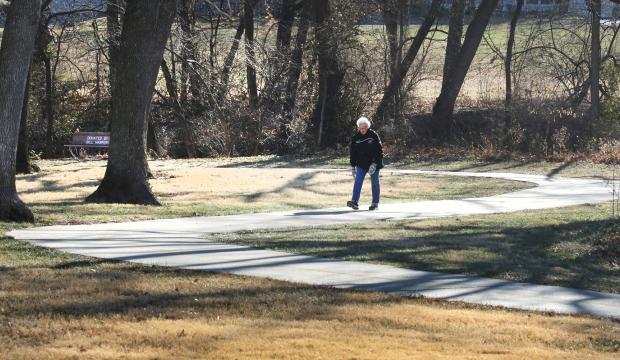
The environment people live in has a big influence on how healthy they are.
That doesn’t mean failed New Year’s resolutions can be blamed entirely on surroundings — a healthy lifestyle is still largely determined by individual choices — but infrastructure and community initiatives can go a long way in encouraging residents to make healthier, more responsible decisions.
Shawnee County is on the path to making this a reality for its residents, thanks to a variety of planned additions to trails and walkways.
“Our 10-year master plan is to have 150 miles of trails in the county,” said Mike McLaughlin, communications and public information supervisor for Shawnee County Parks and Recreation. “We currently have just over 54 miles. An important element of the trails is connectivity. If we can get the current trails to connect to one another, it encourages more use, and people can use them to get to more places for more reasons.”
The Kansas Department of Transportation recently provided a grant to extend the Deer Creek Trail from S.E. 10th Street through Dornwood Park to S.E. 25th Street. McLaughlin said the hope is to eventually connect it to the Lake Shawnee Trail. That would allow cyclists, or ambitious runners, the ability to start on Shunga Trail at its new S.W. 29th and McClure entry point and travel all the way from southwest Topeka to Lake Shawnee without leaving the trail.
McLaughlin said the deciding factor between whether someone hops in a car or walks or bikes to their destination often comes down to how close a trail is to their residence. That’s just one example of how improved accessibility can enhance a community’s health.
“The best policies are those that make the healthy choice the easy one. That’s not always the case,” said Gianfranco Pezzino, senior fellow and team leader for public health systems and services at the Kansas Health Institute. “If you live, for example, in a place that doesn’t have easy access to affordable fresh food, the easy choice is to go to a convenience store around the corner to buy food less healthy for you.”
For that reason, Pezzino said, the 2016 closure of Dillons at S.W. Huntoon St. and Washburn Ave. is a sore spot for him. While driving an extra two to three miles to another Dillons store may not seem like a burden to some, those without cars are more likely to choose unhealthy options without a grocery store within walking distance.
The issues, though, are challenging. Dan Partridge, director of the Lawrence-Douglas County Health Department, said the Lawrence community has been working on the food desert issue for years, looking particularly at East and North Lawrence areas that don’t have adequate access to food.
“It’s been a long road,” he said. “It’s really about a grocer has to turn a profit. It’s hard to overcome that when the market analysis doesn’t look promising.”
Researchers like Pezzino at the KHI conduct studies that lead to publications created for policymakers, arming them with analysis of the community so they can make informed decisions that affect the health of Kansans.
A 2017 survey by the National Recreation and Park Association showed 85 percent of Americans seek high-quality parks and recreation amenities when choosing a place to live, and 95 percent believe it’s important for their local agency to protect the environment by acquiring and maintaining parks and trails.
“If people live in neighborhoods that have damaged sidewalks or not enough lights, or aren’t near pleasant parks or walkways, they won’t do it,” Pezzino said. “If they don’t have the transportation, they can’t go to places like Lake Shawnee or Gage Park.”
While the thought of trails passing by every neighborhood is nice, reaching the 150-mile total envisioned in the county’s master plan takes funding. McLaughlin said the community’s private companies have helped in that regard.
Blue Cross Blue Shield of Kansas made contributions to fund a fitness loop trail at the Shawnee North Community Center. The health insurance company sees obvious benefits from encouraging physical activity among residents and regularly awards funding to health initiatives in its 103-county service area.
BCBS partners with the Kansas Association for Youth in a “Be the Spark” program that provides grants creating the opportunity for middle school and high school students to be physically active. Another initiative, Pathways to a Healthy Kansas, promotes physical activity, nutrition and tobacco-free environments for 16 communities across the state.
“In my opinion, it makes sense for the industry we’re in to improve the health of the community,” said Marlou Wegener, chief operating officer of the BCBS of Kansas Foundation. “It’s a goal for us to place a strong emphasis on supporting the communities we serve.”
Azura Credit Union made a $180,000 gift for naming rights, trail markers and maps for Azura Trails at Skyline Park. McLaughlin said the 4.7 miles of trails, which cover Burnett’s Mound, wooded areas and prairies, offer the most panoramic views in Shawnee County. Before the signs were installed, most people didn’t even know the trails were there.
If the nearly 100 miles of additions are completed as planned over the next decade, the trails — and the opportunity for a healthier means of transportation — will be hard to miss.
“When thinking about changing behaviors, you need to be physically able to do it, of course, but you also need the opportunity and the motivation to make the change,” Pezzino said. “We need to make sure people have the opportunity to begin with. That alone might not be enough, but without the opportunity, people won’t have what they need to develop healthier behaviors.”
Reporter Morgan Chilson contributed to this story.

http://www.thebrittonfund.org/wp-content/uploads/2012/06/BFhotclimates2013.pdf
Everyone appreciates cool shade on a hot day. But in urban settings in the arid west, trees provide benefits beyond
the shade they cast. Researchers at the Center for Urban Forest Research in Davis, CA, have been working since
1992 to quantify the benefits that trees provide. However, with water supplies dwindling as population grows, arbor‐
ists must help educate the general public on how to maximize these benefits while conserving resources.
Trees provide a multitude of benefits. During hot months, the obvious benefit is savings on air conditioning,
usually powered by electricity. Saving money on power bills will be the most apparent advantage that can be “sold” to
residential and commercial clients, as well as to municipalities that are implementing tree care budgets.
There are other less obvious yet quantifiable benefits. Mature trees increase property values. Not only do they
increase “curb appeal,” research shows that residential properties with trees fetch a higher selling price than those
without. The HomeGain.com 2012 National Home Improvement Survey stated that landscape improvements provide a
whopping 215 percent return on investment when selling a home.
BENEFITS BEYOND AESTHETICS
Through photosynthesis, trees use carbon dioxide and produce
oxygen. Climate change has increased concern for reducing carbon
“footprints.” Trees absorb carbon and sequester it in their the leaves,
branches, trunks and roots while alive. This storage continues with
wood in service as buildings and furniture. Trees also facilitate the
storage of carbon in soils by fueling the growth of mycorrhizae on their
roots.
Air quality is improved by the trees that are planted and prop‐
erly maintained. Trees absorb pollutants such as ozone and “grab”
drifting smoke, dust and other particulate matter.
Finally, trees intercept storm water and turn it into a resource
instead of a liability. Storm water may contain a cocktail of pollutants
such as gasoline, pesticides and fertilizer nutrients that end up in
oceans, rivers and wetlands. Trees divert torrential rains with their leaves and their roots absorb water, holding the soil
and slowing erosion.
RUNNING THE NUMBERS
Tree benefits are often calculated using “Leaf Surface Area” (LSA). The greater the LSA, the greater the bene‐
fits. What this amounts to is the bigger the tree, the bigger the benefits. Along the same lines, the longer the tree
grows and thrives, the bigger the payback.
While calculating LSA can be a complex procedure, there are many resources available to determine a tree’s
value. For example, the National Tree Benefit Calculator allows a user to input a zip code, then a tree’s species and size
to calculate an overall benefit in dollars, as well as storm water retention, increase in property value, energy savings,
air quality benefits and atmospheric carbon capture, all monetized. Using the calculator, a five‐inch diameter yellow
palo verde tree in the Las Vegas area provides $44 in benefits a year. The benefit more than doubles to $103 if the tree
grows to 10 inches in diameter.
LOCATION, LOCATION, LOCATION
Maximizing these benefits requires proper tree selection, placement, planting and maintenance. Sources for
species selection include the Cooperative Extension, numerous books available from any major bookseller and even the
local water authority.
To reap the greatest energy savings in hot climates, trees should be planted on the east and west sides of a
building, to provide shade to the west or southwest exterior windows. Trees should be planted so the mature canopy
edge is as close to the building as possible to maximize summer cooling, although access and fire safety must be con‐
sidered. Deciduous trees allow the sun to provide winter heating, thus reducing winter fuel use and cost.
Maximizing Benefits of Trees in Hot Climates
The shade that trees provide in hot climates go beyond
aesthetics and can be quantified. All photos courtesy:
Helen M. Stone
www.thebrittonfund.org
For optimal carbon capture, grouping plants with similar needs will make irrigation and other maintenance
procedures more efficient, which will reduce carbon inputs. Woody plants such as trees and shrubs sequester more
carbon than grasses and other herbaceous plants.
Trees in mulched areas are better carbon collectors than trees in turfgrass. While fast‐growing trees sequester
more carbon early in their lives, they usually have a shorter lifespan than slow‐growing trees, so plant a diversity of
species for the best long‐tem results.
For improving air quality, trees planted near streets and park‐
ing lots collect dust and other particulate matter. Not only do they in‐
tercept and remove pollutants, their mitigating qualities also reduce
gases and hydrocarbons emitted by parked cars as the engines cool
down.
SIZE MATTERS
Although large trees provide more cooling than small ones, be
sure the tree has room to grow. A massive oak in a four‐by‐four foot
cutout in a parking lot will only struggle and succumb, while an acacia
can adapt to the small space and provide cooling for years. Parking lots
can be designed so that trees have adequate soil volume to establish a
large, healthy root system.
Minimize pruning by adopting structural pruning practices that
build a strong tree architecture. Avoid thinning trees, as this reduces
their effectiveness as cooling and shading features in the landscape. Prune in the dormant season when leave area re‐
duction is less important to energy saving requirements of the warmer months.
WATER ISSUES
When storm water interception is a concern, look for trees that have big, rough leaves or dense thick cano‐
pies such as conifers. Conifers are also a good choice when choosing “air cleaners” because they provide shade and
foliage all year. Trees with long leaf stems such as maple or ash and rough or fuzzy leaves (i.e. sycamore and oak) are
especially efficient at scrubbing air pollutants.
Water is a major issue in arid climates, and the benefits that trees provide must offset the water they need to
thrive. Choosing desert species such as mesquite, acacia and palo verde is recommended, as well as low‐water‐use spe‐
cies from Mediterranean climates with little summer rainfall.
According to the Arizona Municipal Water Authority (AMWA), a mature desert tree will use 4,000 gallons of
water a year. Obviously, trees use more water in summer than winter, so irrigation systems must be designed to ac‐
commodate mature trees at peak usage. However, proper scheduling is crucial. Schedules must be adjusted so that
irrigation is decreased (or even eliminated), during rainy winter months. Mulch also conserves soil moisture.
A wise native plant restoration specialist once said that people don’t live in deserts — they live in oases. Trees
provide incomparable benefits to the health and well being of desert dwellers, but proper selection, design, planting
and maintenance are critical to make the advantages outweigh the inputs they require.
Further Reading/Links:
Tree Benefit Calculator
http://www.treebenefits.com/calculator/index.cfm
Desert Southwest Community Tree Guide
http://www.fs.fed.us/psw/programs/cufr/products/cufr542_72dpiDsrtSWCommTreeGd04.pdf
Potential of Tree Shade for Reducing Residential Energy Use in California
http://joa.isa‐arbor.com/request.asp?JournalID=1&ArticleID=2704&Type=2
Fourth in a series of 10 Technical Information sheets by Helen M. Stone and Dr. AJ Downer. Funded by The Britton
Fund, Inc. and supported by the Western Chapter of the International Society of Arboriculture. Copyright 2013.
The city is planning a major green makeover to combat the heat island and create a more welcoming place for humans and animals alike.
It’s an issue that many older, denser cities are facing as they try to make themselves more amenable to their citizens and the environment. For Barcelona, this challenge requires especial ingenuity. Take a walk around what is one of Europe’s most densely populated city cores and you’d be forgiven for pronouncing the place full.
With an intense knot of historic masonry at its heart, Spain’s second city doesn’t display the most obvious potential as a future green paradise. But it badly needs new green spaces to battle its heat island effect, manage air and noise pollution, and generally improve citizens’ quality of life.
That’s why, on Monday, the city nonetheless rolled out a paradigm-shifting re-greening program, one that will double the number of trees in the city, increase park space by two thirds, and give each citizen an extra square meter of green areas. The urban plan, which will deliver 108 acres of new green space by 2019 and over 400 acres by 2030 is a model of ingenuity that could serve as a model for other cities.
In its core, Barcelona is built up more or less to the last square inch, with a network of historic streets and alleys supporting a population density greater than Manhattan’s. This area’s sea of buildings is sometimes softened with avenues of trees, small gardens, and one modest but beautiful park—but it can still feel heavy-aired and claustrophobic on Barcelona’s many hot days.
This imbalance may partly contribute to major differences in temperature between the city’s center and its periphery. Temperatures are typically up to 7 degrees Celsius (11 degrees Fahrenheit) higher in the old town than in the city’s greener, higher suburbs. Cities on the Iberian peninsula have always adapted carefully to intense summer heat. Streets stay narrow to provide shade, while south-facing windows often stay covered with awnings and shutters in the hotter months to keep interiors cool without automatic resort to air conditioning. Still, in a city where summer highs already regularly reach above 90 degrees Fahrenheit, climate change will see Barcelona only get warmer, drier and potentially more uncomfortable. Plans to green the city are thus not merely about creating a more pleasant-looking urban environment—they’re an essential step toward ensuring that inner Barcelona stays liveable in summer.
The five new gardens, many of which are already under construction, are a lesson in finding space where there doesn’t appear to be any. The largest one will spring up around a major city square; the land used to belong to road traffic, but those cars are now being diverted into nearby tunnels. A small park was already created at Plaça de les Glòries Catalanes, and by burying elevated roads that currently criss-cross the space, the city has found a way to greatly extend it and make the resulting oasis much calmer.
Another green space will be made—controversially—by clearing away a large courtyard block in the city center that is currently partially filled by squatted, single-story 1920s workshops. A third public space will be created by opening the lush, mature 7.5-acre garden of a newly created house museum to the public. A fourth parkwill be opened on what is currently a small, scrappy piece of ex-industrial semi wasteland in the hinterlands behind the city’s main container port, and a fifth will be created as part of a long-stalled but newly revived redevelopment of an outlying barracks.
Arguably the biggest change isn’t from the parks, but from the policies designed to connect green spaces into one leafy network. Ten large interior courtyards in Barcelona’s Eixample district will be planted with trees, while 10 city squares will get parking restrictions that allow for more plantable area. New or enlarged avenues of trees will thread this network together along major streets with surfaces that are more permeable to rain, so that birds and insects can spread across a seamless habitat.
Back in town, the city is also stumping up a lot of cash to promote green roofs. The city has just called for applications for 50 bursaries of €1,500 to create greening plans for roofs across the city. The top 10 of these submissions will be eligible for grants of up to €100,000 per roof, while elsewhere the city will get new bird and bat boxes, rooftop hives, and insect hotels. Creeper will also be planted and trained across bare walls.
Taken individually, all these microprojects are tiny drops in the bucket. Together they will work to form a flood, creating a future Barcelona that is greener, fresher, more sustainable, and more humane.

